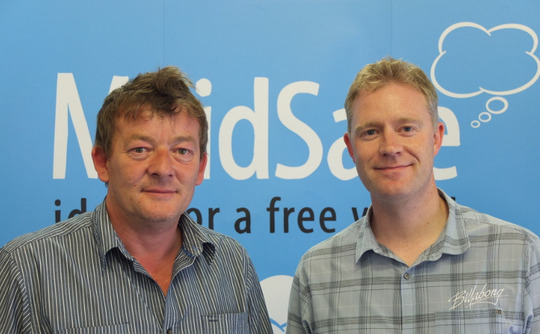[quote=“alkema_jm, post:218, topic:354”]
P.S Fouten van startups (uit een enquête van ondernemers van inmiddels failliete startups). Bron de Telegraaf 15 maart 2016 bladzij DFT T27:
- Geen vraag naar het product (42%);
- Geen geld meer (29%);
- Niet het juiste team (23%);
…[/quote]
Een vluggertje van deTelegraaf Media Groep NV? Bij die “Amerikaanse data-specialisten” waar ze het van overgenomen hebben kan dyscalculie ook een rol spelen zie ik:
1 Geen vraag naar het product 42%
2 Geen geld meer 29%
3 Niet het juiste team 23%
4 Te weinig rekening gehouden met concurrenten 19%
5 Slechte prijs/kwaliteitverhouding 18%
6 Een slecht product 17%
7 Een haperend of ontbrekend businessmodel 17%
8 Slecht marketing 14%
9 Te weinig rekening gehouden met gebruikers 14%
10 Slechte timing 13%
____+
11 Ontbreken basisvaardigheden toegepast rekenen 206%
Ha, JM, ik wist wel dat je om zou gaan wat betreft MaidSafe:
Meet the men who have rewritten the internet
Given Sir Tim Berners-Lee’s oft-stated worries about internet privacy you’d have to wonder whether he’d do things differently if he had his time over again. David Irvine, CEO of “the oldest startup in the world”, MaidSafe, is sure that he would.
“If you taught a computer engineering graduate all about IP networks and computers then said ‘here are a bunch of cables and routers now go away and design a network where we can all store data and communicate securely’, the very last thing they’d do is design a server,” he said. “The only reason we did it that way because disk drives were invented before the internet.”
Irvine and his colleagues have spent the last 10 years looking at ways to eliminate the weak link - the server - from the equation. “It should be about securing the data, not the server,” he said.
“The only way you can really do that is to create some form of network where humans can’t interfere, and where a piece of data is never stored on a single machine. By definition that has to be an autonomous network.”
The autonomous network they created - called SAFE - has just, after 10 years development, been released as a minimum viable product consisting of a launcher, a test application and an API. The firm promises that applications will follow over the coming months.
Maar had je het al uitgeprobeerd, Jan Marco?
Gisteren kwamen ze met de - nu wekelijkse - derde “rollende” testversie:
Introduction to SAFE Launcher
The SAFE Launcher is a gateway for any app that wants to work on the SAFE Network. It runs as a background process and will be responsible for decrypting data from the SAFE Network and re-encrypting it using app specific keys while fetching data on app’s behalf and vice-versa during app’s request to put / post / delete data.
Why do we need a gateway?
An applications direct access to the SAFE Network on behalf of the user is an issue with high security concerns. Without Launcher, every app would ask for user credentials to log into the SAFE Network. This means that sensitive information, for example a user’s session packet data could be compromised and potentially misused. Launcher will prevent this from happening as, with regard to credentials, apps only interface with the SAFE Network indirectly via Launcher on the user’s behalf.
JM, niet te losjes doen over de code-kwaliteit want ik heb je nodig voor een deskundig oordeel !
In ieder geval heeft Dropbox het volgens de berichten toch maar voor elkaar, op basis van Rust.
Althans voor klanten in de VS, in Europa voorlopig maar even niet, dank je wel Edward:
Just because the business is growing in a less predictable way in Europe.
Wat die sources aangaat, voor SAFE zou alles toch hier moeten staan:
Updated an hour ago ;o)
